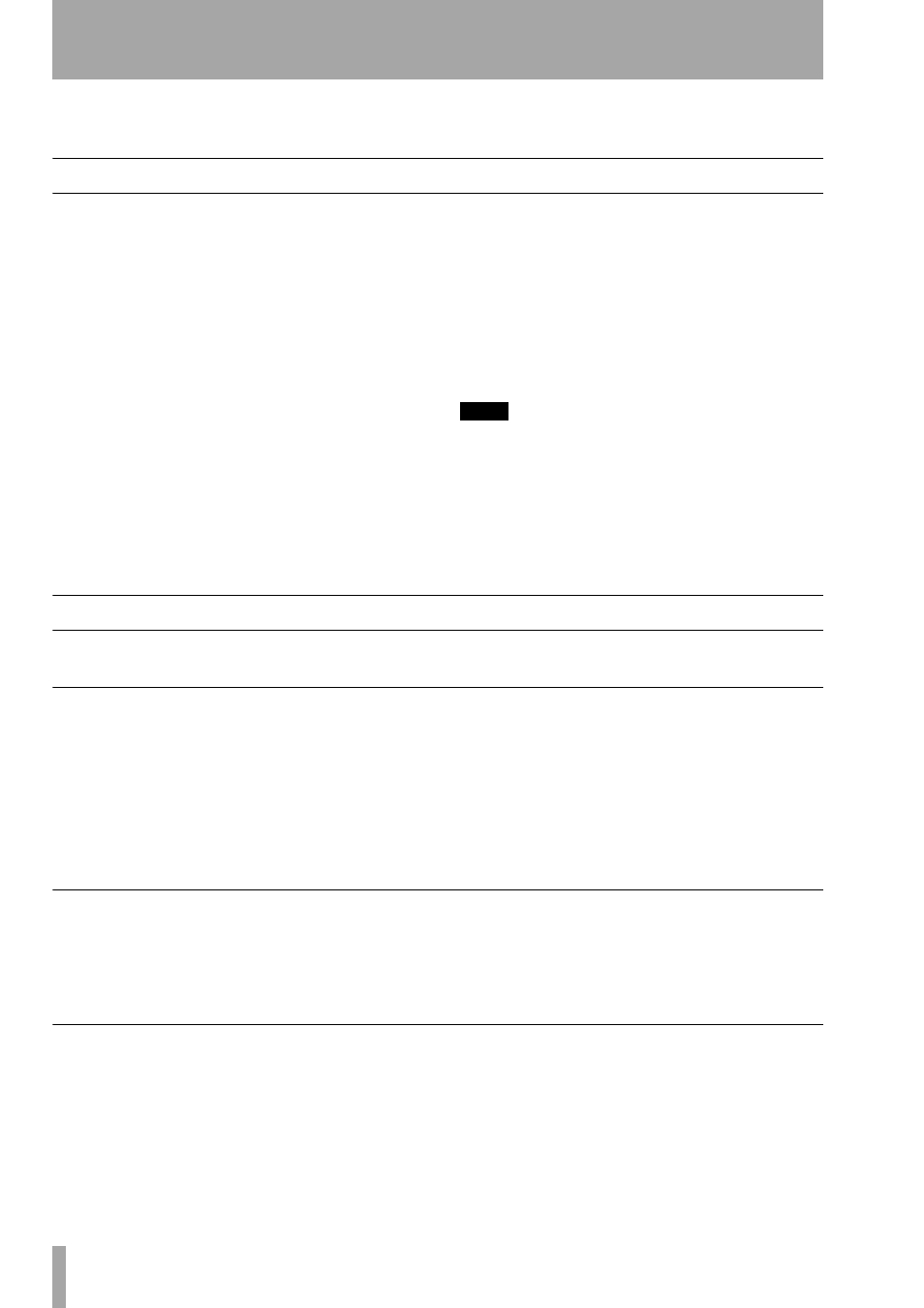Chapter 13 – automation, Understanding modes & states, Controller states – Teac SX-1 Reference Manual User Manual
Page 80: Automatic (auto), Static, Write, Part iv–mixer controls

Part IV–Mixer Controls
80
TASCAM SX-1
Reference Manual
Chapter 13 – Automation
Understanding Modes & States
The SX-1 can write automation moves to any of the
mixer’s controls, including: faders, mute, pan, sur-
round, EQ, dynamics, aux sends, buss assign, cue
and library recall. Automation can also be written to
the effect plug-ins’ parameters.
The automation functions are best understood when
broken into two categories - those functions that are
global in scope and those that are controller specific.
We’ll call the first category Global Modes, and the
second, Controller States. Global Modes cause all
controllers to respond in a way that is defined by
each individual controller’s State. A controller’s
State refers to its current automation condition —
which in turn determines how it will react to the Glo-
bal Mode.
While Global Modes can be turned on and off, a con-
troller’s State is always active (even if its automation
State is Off, which is still a State). For example, a
controller whose state is Automatic will read pre-
existing automation data with no Global Mode
active. However, when Global Write is enabled the
controller will also (in addition to reading the pre-
existing data) write automation over its pre-existing
data when the controller is moved. Each of the auto-
mation’s Global Modes and Controller States are
explained on the following pages.
TIP
The SX-1’s faders are touch-sensitive. During automa-
tion, they sense that they are being touched through
the stray capacitance in your fingertips. To ensure that
the touch-sensitivity of the faders is responding prop-
erly, always use the pads of your fingers to move the
faders. If you use another device (such as a pencil, ruler,
or even your fingernail), the fader will not register as
having been touched.
Controller States
There are six different Controller States:
Automatic (Auto)
This is a controller’s default automation state. It is
highly flexible, as it will change its behavior depend-
ing on the status of the Global Modes, whether or not
it already has dynamic mix data, and whether or not
it is being touched.
For example, when a control is in Auto and the trans-
port is running, the control enters write ready if the
Global Write LED is lit, or trim ready if the Global
Trim LED is lit. The control reads pre-existing data
(if any) until it is moved, and then enters the appro-
priate state (writing or trimming). It is possible for a
single control, or a group of controls to drop into and
out of writing and trimming in one pass, while other
controls remain unaffected.
Static
During the course of an automated mix, some con-
trols require movement (Dynamic automation) while
others remain stationary throughout the track. The
position of these controls are saved as part of the
mix. A control in Static will have its position auto-
matically updated in the current project’s mix file
whenever that control is moved, regardless of
whether a Global Mode is active.
Write
A control in Write Status behaves just as if it were set
to Auto, and Global Write was on. This status does
not require that a Global Mode be enabled to enter
write ready, as the control enters that status the
moment
PLAY
is depressed. Any movement of the
control while the transport is running will overwrite
pre-existing data.